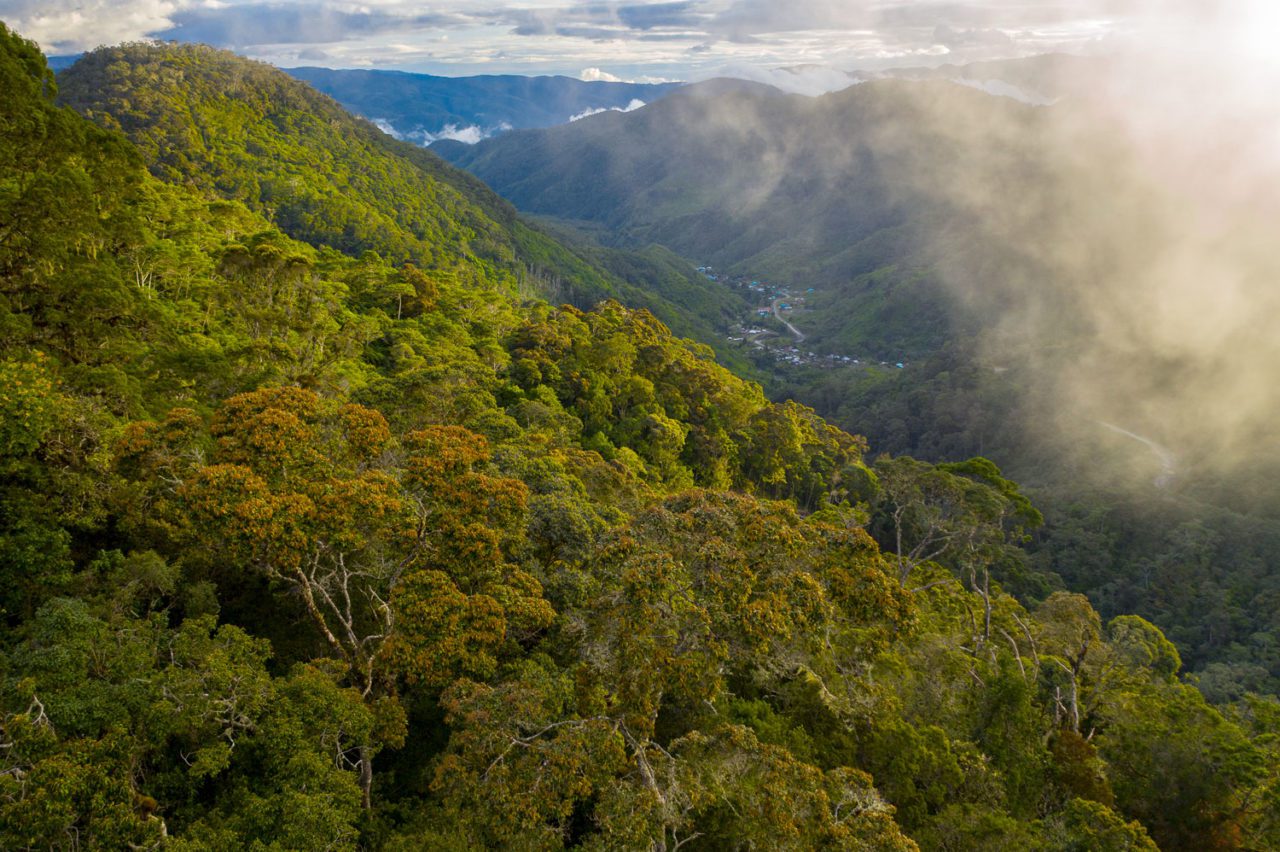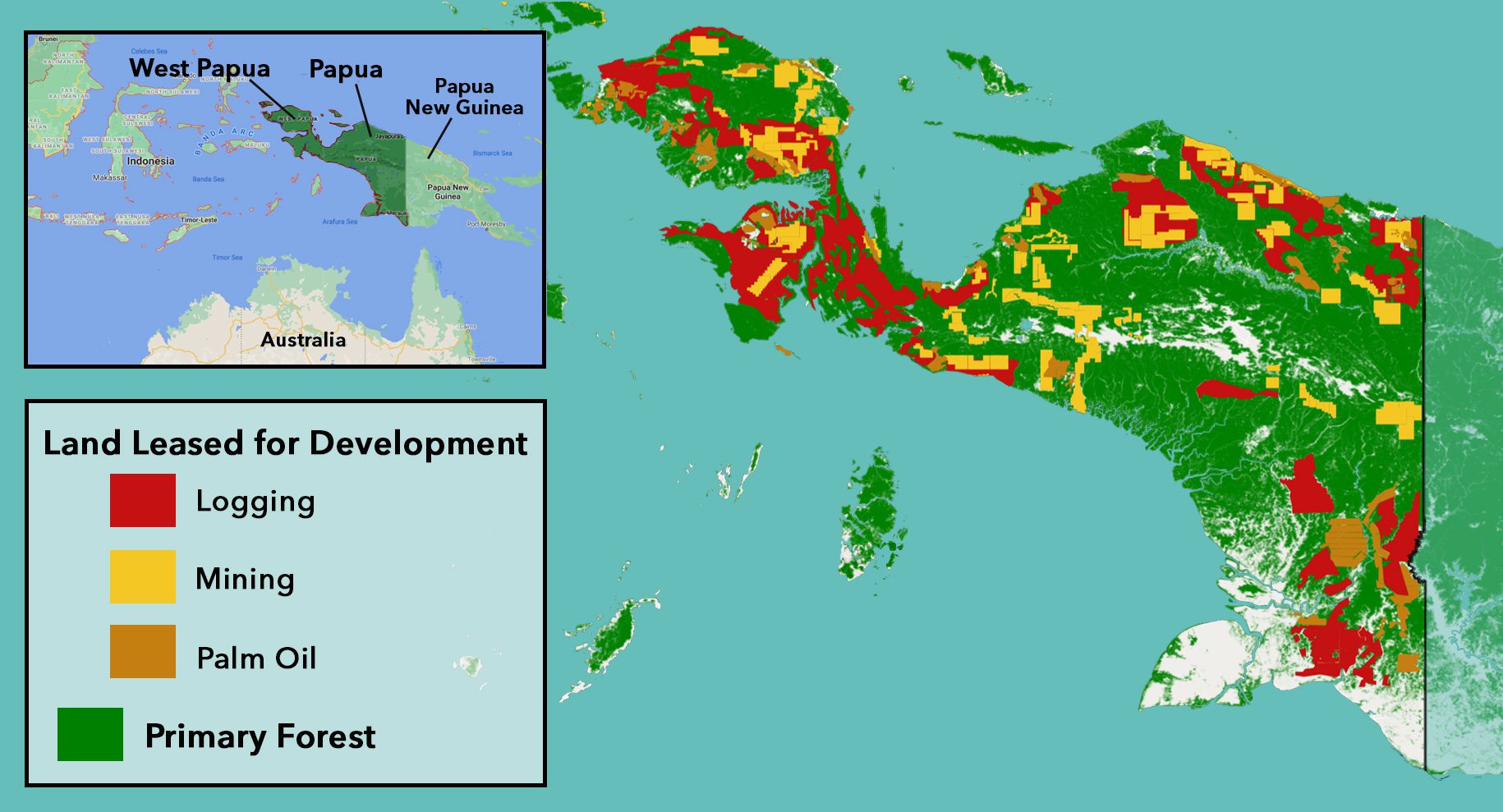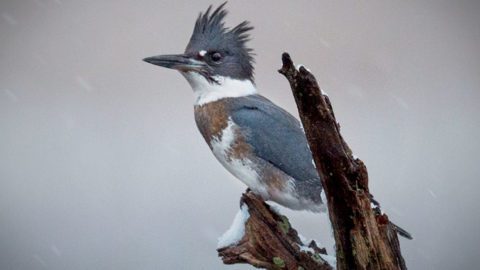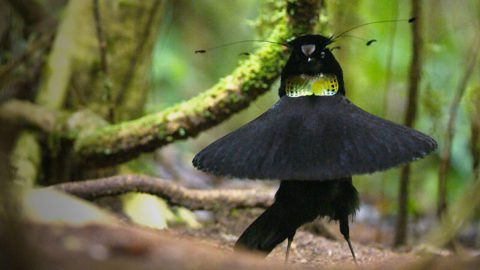Analysis: The Forest Home of the Birds-of-Paradise Is Disappearing. Fast.
By Edwin Scholes
December 21, 2020
From the Winter 2021 issue of Living Bird magazine. Subscribe now.
Even after more than 20 years of studying their behavior and natural history, I am still captivated by the beauty and otherworldly behaviors of the birds-of-paradise. From 2004 to 2012, I partnered with photographer Tim Laman on a series of 18 expeditions to New Guinea to document every species in the birds-of-paradise family in the wild for the first time in ornithological history. After more than 2,000 hours of hiding in the forest to observe these fantastically different birds, we saw displays and breeding behaviors like the dancing of the Arfak Astrapia that had never before been scientifically documented.
When it comes to the birds-of-paradise, there are still many discoveries to be made. But in recent years, our work has shifted beyond science and exploration. With roads being cut deeper into undisturbed lands and forests disappearing from the mountains to the mangroves, we are increasingly working with partners to protect the places that this majestic family of birds calls home: the rainforests of New Guinea.

The birds-of-paradise homelands are rich forested landscapes with incredibly diverse wildlife and indigenous cultures. They include such varied places as the lowland rainforests of the Raja Ampat islands, home to Red and Wilson’s Birds-of-Paradise, and the cool mist-fringed forests of the rugged New Guinea interior, where hard-to-see species like the Vogelkop Lophorina and Black Sicklebill are found. These forest-dependent birds thrive there because New Guinea is home to half of the remaining unlogged, or intact, rainforest in the entire Indo-Pacific region—a geographically complex patchwork of forest that stretches from the Indochinese and Malay Peninsulas of mainland Asia to the islands of the Malay Archipelago and Philippines, and eastward to New Guinea and nearby islands. These intact Indo-Pacific forests are one of only three main tropical forest areas on Earth (the others being the Amazon of South America and the Congo in Africa).
More in this Issue
The intact forests of New Guinea have few signs of human activity, like roads, croplands, or villages. They are complex networks of living and nonliving elements, and they support some of the highest levels of terrestrial biodiversity in the world, making New Guinea the most species-rich island on Earth. New Guinea’s intact forests provide habitat and food for over 14,000 plant species, 625 bird species, 289 mammal species, 373 reptile species, 442 amphibian species, and 380 freshwater fish species, along with near countless species of invertebrates, fungi, and forest microbes. Beyond biodiversity, intact forests also influence weather patterns such as cloud cover and rainfall. They redistribute water runoff, stabilize water tables, and regulate the cycle of nutrients and sediments through the ecosystem, which prevents erosion and maintains soil fertility for food production for humans. And with today’s climate extremes, they provide a forest buffer from the increasing intensity and frequency of heat waves, droughts, and floods.
In short, intact forests like those in New Guinea are essential because they support the full range of native biodiversity and contribute to the well-being of people locally and around the world. Yet the trajectory of Indo-Pacific forest cover has been in decline for decades.

Twenty years ago, when I first visited New Guinea to study the birds-of-paradise, the region was home to the second-largest expanse of unlogged rainforest in the world. At roughly 188 million hectares (an area about the size of Mexico), its unlogged forests were slightly larger than those of the Congo. But since 2000, the Indo-Pacific has been losing its rainforest at a faster rate than anywhere else.
Today, satellite records reveal that its intact forests are about half the size they were two decades ago, with most loss occurring in the Malay Peninsula and the islands of Sumatra and Borneo. The main drivers of this loss have been resource extraction, including logging for timber and pulpwood, and clearcutting for palm oil plantations. Forests are also being cleared to accommodate the increasing infrastructure needs of the region’s rapidly developing countries such as Indonesia, Malaysia, and Thailand, which have growing populations and expanding economies.
Fragmented and degraded, the Indo-Pacific rainforests are losing their ability to sustain ecosystem functions and provide the full range of benefits that people depend on. These intact forests have provided material and spiritual resources for forest-dependent societies for upwards of 70,000 years. Today, over 100 million people—roughly one quarter of the indigenous peoples worldwide—rely on their direct use for food, water, shelter, and livelihoods. New Guinea in particular has been occupied by humans for no less than 47,000 years. With more than a thousand languages from over 17 language families, New Guinea has more languages and traditional cultures than any other comparable area on Earth. And most of these cultures have traditionally been dependent on forests.
Intact Indo-Pacific forests also provide air-quality benefits to people in major urban areas like Jakarta, Singapore, and Kuala Lumpur, because intact forests are able to withstand wildfires, which prevents clouds of smoke and haze drifting over these cities. Intact forests also yield compounds that supply millions of people with medicines worldwide. Calanolide A is an antiviral compound derived from a tree species in Borneo that is undergoing clinical trials for the treatment of HIV. And more relevant today than ever, intact forests reduce the contact between humans and disease vectors, limiting the transmission of infectious diseases such as Covid-19.
The benefits of intact forests also reach globally. They provide a free service for mitigating the impacts of climate change by sequestering carbon (in the form of carbon dioxide) from the atmosphere and storing it in their trees, soils, and peatlands. Overall, the Indo-Pacific’s remaining intact forests hold more than 120 gigatons of carbon, with New Guinea’s forested regions alone accounting for about 40 gigatons. Keeping these forests intact keeps that carbon out of the atmosphere, which would play a major role in achieving the Paris Climate Accord target of preventing global warming from exceeding 1.5 degrees Celsius above pre-industrial levels.
Despite the many benefits from biodiversity to climate-change mitigation that intact Indo-Pacific forests provide, the land-use plans issued by local governments are often at odds with maintaining forest integrity. As of 2020, land concessions have been issued for 60% of the western half of the island of New Guinea, with over 20 million hectares allocated for industrial logging, mining operations, and oil palm plantations. To facilitate those operations, major infrastructure projects are underway, including a 2,500-mile road network that cuts through previously unlogged forests that are home to several bird-of-paradise species and indigenous communities. A similar scenario is unfolding on New Guinea’s eastern half as well.
Once these forests are gone, they are gone for generations, and no known human-made alternatives can restore all the benefits they provide. Which is why we find ourselves at such an urgent crossroads in 2021, as more than 200 nations come together for the next Convention on Biological Diversity and U.N. Climate Change Conference to decide what additional commitments will be made, and what new actions will be taken, to solve the twin challenges of biodiversity loss and climate change. What happens to the intact Indo-Pacific forests between now and 2030 will not only determine the future of the people and species in New Guinea, it will determine the future for all of us on planet Earth.
Dr. Edwin Scholes is a cofounder of the Birds-of-Paradise Project and research associate in the Cornell Lab of Ornithology’s Center for Conservation Media, where he is leading efforts to produce impact-focused media about the need to keep the Indo-Pacific region’s rainforests intact.

All About Birds
is a free resource
Available for everyone,
funded by donors like you
American Kestrel by Blair Dudeck / Macaulay Library




